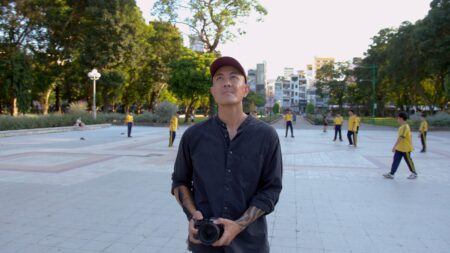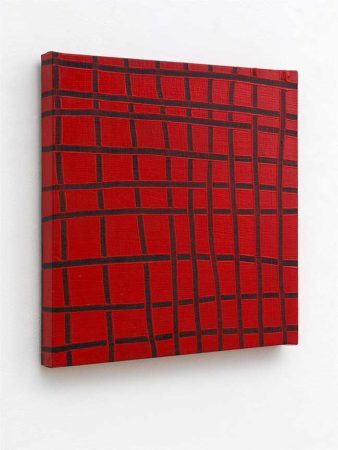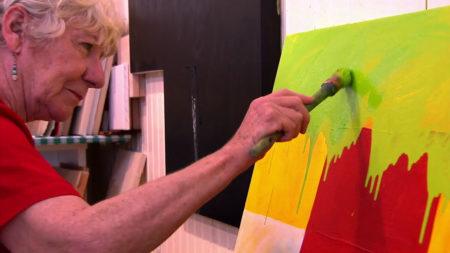Continue playing
(Time remaining: )
Play from beginning
Continue playing "{{ controller.videos[controller.getVideo(controller.currentVideo)].segmentParentTitle}}"
{{controller.videos[controller.getVideo(controller.currentVideo)].title}} has ended.
InspirationMary Heilmann
In her Long Island studio, Mary Heilmann discusses two inspirations for her work: tea bowls that adhere to the Japanese aesthetic philosophy of “Wabi-sabi” and the cartoon color palette used in The Simpsons television show.
Heilmann contrasts her working method with that of the Abstract Expressionists, preferring to find “the easiest way to do it” which often involves thinking through the compositions and colors with a computer. The video features ceramics and paintings installed as part of the artist’s traveling retrospective To Be Someone at the New Museum and the Wexner Center for the Arts.
Credits
Producer: Wesley Miller & Nick Ravich. Interview: Susan Sollins. Camera: Mark Falstad & Joel Shapiro. Sound: Roger Phenix. Editor: Paulo Padilha & Mark Sutton. Artwork Courtesy: Mary Heilmann. Special Thanks: Wexner Center for the Arts, Columbus, & The New Museum, New York.
Closed captionsAvailable in English, German, Romanian, Italian, Japanese, Korean, Chinese, Italian
Through the Art21 Translation Project, multilingual audiences from around the globe can contribute translations, making Art21 films more accessible worldwide.
Interested in showing this film in an exhibition or public screening? To license this video please visit Licensing & Reproduction.
For every piece of Mary Heilmann’s work—abstract paintings, ceramics, and furniture—there is a backstory. Imbued with recollections, stories spun from her imagination, and references to music, aesthetic influences, and dreams, her paintings are like meditations or icons. Her expert and sometimes surprising treatment of paint—alternately diaphanous and goopy—complements a keen sense of color that glories in the hues and light that emanate from her laptop, and finds inspiration in the saturated colors of TV cartoons. Her compositions are often hybrid spatial environments that juxtapose two- and three-dimensional renderings in a single frame, join several canvases into new works, or create diptychs of paintings and photographs in the form of prints, slideshows, and videos.
Finding Inspiration
Richard Serra
Ida Applebroog
Jenny Holzer
Artwork Survey: 1970s
Mary Heilmann
Mary Heilmann



